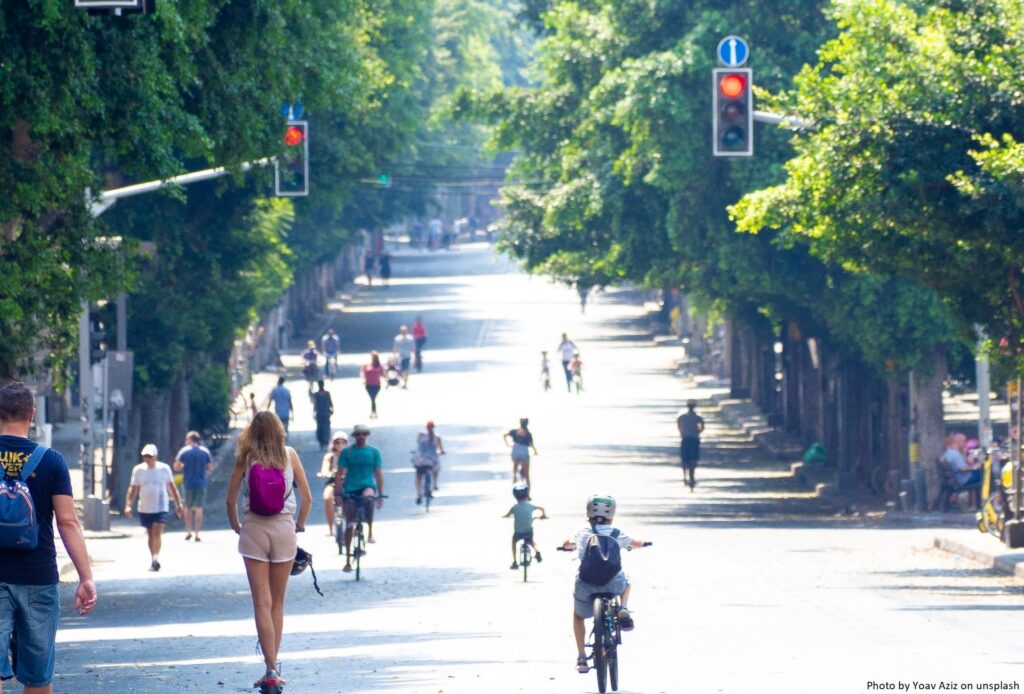EU-project ENSEMBLE (finished in March 2022) presents its final results after almost 4 years of research, aligning, implementing and testing with the 19 project partners. Aim of the project was to pave the way for multi-brand truck platooning, where truck platooning is defined as the linking of two or more trucks in convoy, using connectivity technology and automated driving (support) systems. Supported by the European Union with 20 Mio EUR an important step towards safer and more efficient transport was made: the harmonised technology for multi-brand platooning was defined, tested and demonstrated.
The ENSEMBLE project
Until the start of the project in 2018, all European truck manufacturers demonstrated that platooning is feasible, e.g. in the European Truck Platooning Challenge in 2016. However, then the manufacturers used individually developed technology, e.g. for the required communication between the trucks (V2V communication).
To be able to platoon with each other across brands, a common technology is required. In the ENSEMBLE project, led by TNO, all European truck manufactures, DAF, Daimler Trucks, Iveco, Man trucks & bus, Renault trucks, Scania and Volvo trucks, cooperated to align the platooning technology to‘talk the same language’. Next to the manufacturers, suppliers Bosch, Continental, ZF, NXP, Brembo and the European Association of Automotive Suppliers (CLEPA) were involved.
The research partners IDIADA, Université Gustave Eiffel, KTH and Vrije Universiteit Brussel supervised the testing and researched different effects of platooning, e.g. on other road user reactions, traffic, road load, etc. ERTICO, organiser of ITS Europe, made the link to the Platooning Community.
The developed Platooning Functions
The ENSEMBLE project defined two platooning functions: Platooning as a Support Function (PSF) and Platooning as an Autonomous Function (PAF). The first function, the PSF, should be quickly deployable. It is a driver support function similar to an Adaptive Cruise Control (ACC), as it regulates the distance to the vehicle in front. By using V2V communication, the PSF is safer as strong braking events are detected faster than by using conventional, on-board sensors alone like e.g. radar or camera. Additionally, braking waves (string instability) can be damped to optimise traffic throughput.
The PAF provides the vision of the ENSEMBLE Partners for the future of Platooning based on theoretical considerations and assumed advancement of the state of the art of automated driving technologies. It foresees a driver in the first truck followed by maximum two trucks with the driver out of the loop, travelling from hub to hub. In this case, the V2V connectivity between the trucks acts as an enabler allowing the automation of the following vehicles. The PAF places itself between a support function and a fully autonomous truck.
For both functions, use cases, specifications and requirements were defined. This includes the V2V communication protocol, one of the major outcomes of the project. It defines not only the required data elements, but also when and how these should be transmitted. Additionally, a security framework for the communication based on the existing PKI (Public Key Infrastructure) of ITS-G5 and additional symmetric and asymmetric encryption, has been proposed and successfully tested.
Testing on test track and real road
To evaluate the technical feasibility and to accelerate standardisation, the PSF had been implemented by all truck manufacturers and tested. The PAF has not been implemented or tested as the current state of the art should first progress to offer sufficiently safe solutions to implement a viable and testable PAF.
The first testing sessions were performed in smaller groups of two to four trucks from different partners. Despite the Corona Pandemic, a total of nine of such test sessions could still be performed before finally meeting up with all trucks for the final testing and demonstration in Barcelona in September 2021. Then the different implementations of the partners were both tested on track and on public road.
Results
On the basis of the test results it could be concluded that the PSF, as defined by the use cases, requirements and specifications, is technically feasible. Moreover the results of the testing were also used in some of the impact evaluations. The following conclusions were made based on the results of the different impact evaluations performed in the project:
- Road authorities can potentially benefit from platooning as the integration and uptake of the platooning functionality necessitates the digitization of vehicles and logistics. This potentially enables the road authorities to influence the parameters (e.g. time gap, speed, allowed number of trucks in a platoon) according to which the trucks are driving on their pavements.
- In the current road situation at least 15% of all trucks could already benefit from platooning without having to change their behaviour. Trucks can find each other using a platoon matching service.
- Economic analysis has shown that for fleet owners there is only a direct business case for the PAF, mainly because of the expected impact on driver efficiency costs. For the platooning support function, the potential benefits (and therefore the business case) are more on a societal level, since it is expected to increase traffic safety, driver comfort (not assessed in the current study) and road capacity.
- The positive effect of truck platooning on road capacity increases when the percentage of trucks in the total traffic flow is high (around 20%). However, negative impacts on road capacity were found in merging areas, when merging traffic enters the mainline traffic with a lower speed; this negative impact is higher for smaller time gaps.
- When trucks platoons are relatively long (7 trucks), one of the performed studies has shown that other road users will merge in between the platoon when entering the highway at a relatively low speed. To avoid dangerous situations, the developed platooning system increases the gap when a cut-in vehicle is detected, but it is still advisable to avoid long platoons or to have larger time gaps in the vicinity of highway entries.
- The PSF does not show an improvement in fuel consumption and emissions. This is because the Platooning Support Function is following at 1,5 seconds or more, which is not significantly closer compared to the current driving situations on the roads. Looking at the PAF, with headways lower than 1 second, potential effects on fuel consumption and emissions are expected but this requires further testing under circumstances that represent real-life logistical operations.
Following these conclusions, truck platooning is beneficial for road capacity and traffic flow. Truck platooning on road segments with a lot of highway entries also shows negative effects that can be mitigated by larger time gaps, limiting the platoon length and ramp metering in such areas. In this respect, hub to hub platooning using dedicated (digital) infrastructure and platooning at night can be considered a first potentially viable use-case. PAF can strengthen this use case, eliminating part of the current driver shortage at night.
Given the chosen approach to first develop the platooning technology/platform that can be deployed using existing technology and under current legislation (the PSF), the PSF can bring potential safety benefits, but cannot bring the expected economic benefits and impacts of platooning immediately after the project.


